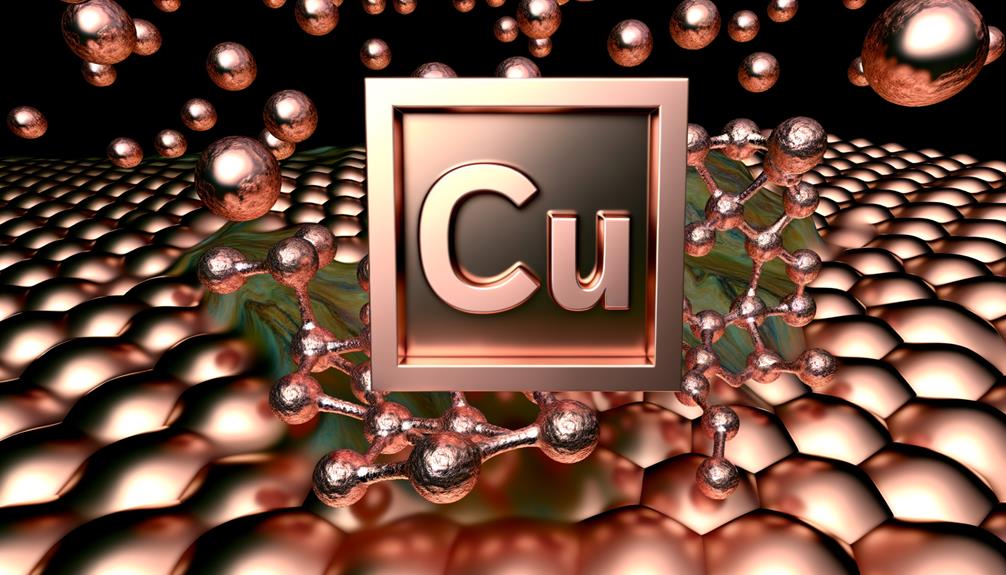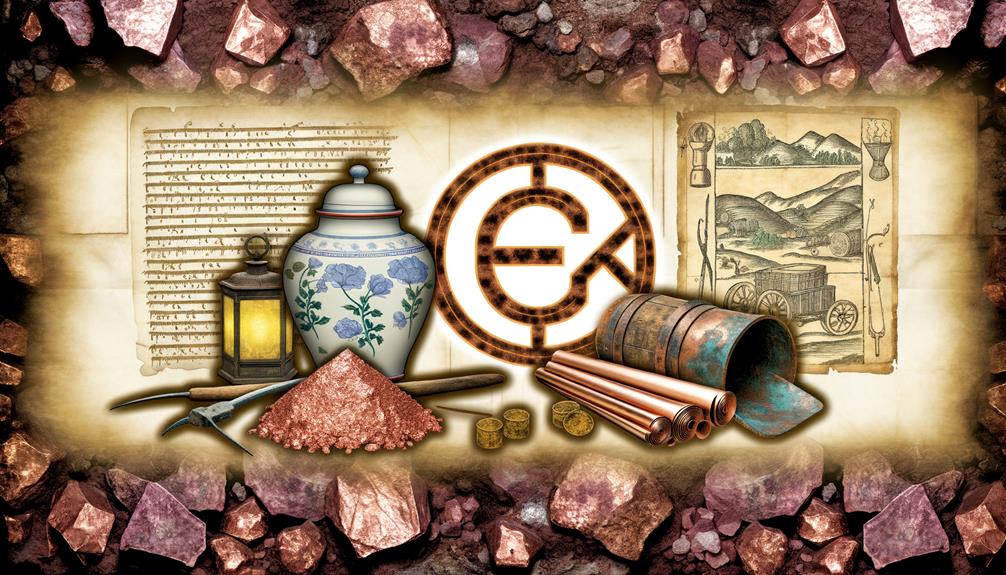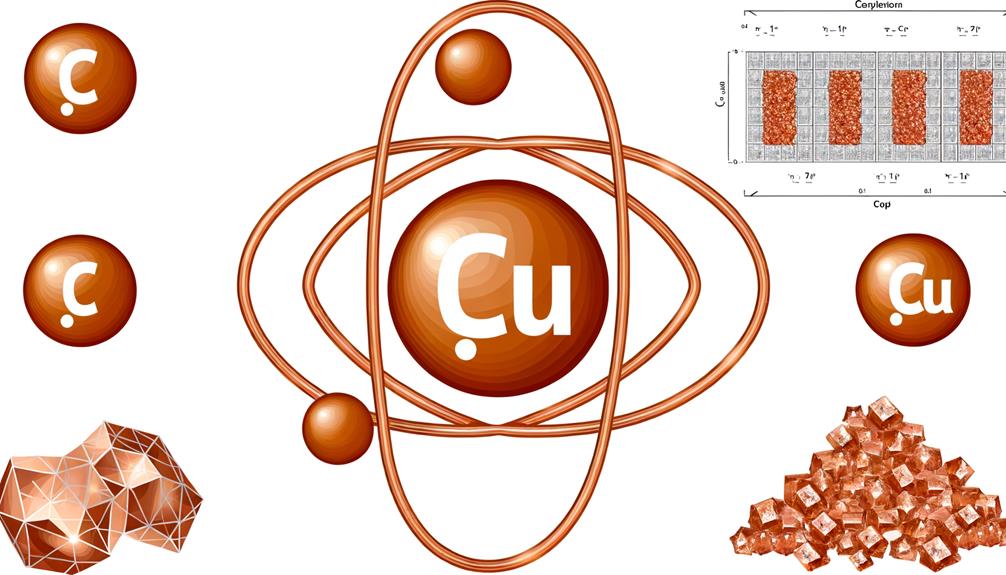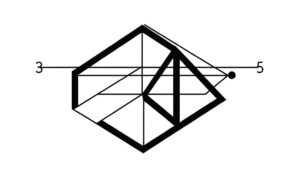How to Identify the Symbol for Copper: Understanding ‘Cu’
The chemical symbol for copper is 'Cu', originating from the Latin term 'cuprum'. Copper is a metal with an atomic number of 29 and an atomic weight of 63.546 amu.
Its electron configuration is [Ar] 3d^10 4s^1. Copper is renowned for its exceptional electrical and thermal conductivity, making it indispensable in electrical wiring, plumbing, and the creation of various alloys.
The historical significance and extensive usage of copper, dating back to ancient civilizations, underscore its importance in human development. Further exploration will reveal additional technical details and applications of this critical element.

Key Takeaways
- The symbol for copper is 'Cu'.
- 'Cu' originates from the Latin word 'cuprum'.
- Copper's atomic number is 29.
- Copper's electron configuration is [Ar] 3d^10 4s^1.
- Copper is essential in electrical wiring and electronics.
The Symbol 'Cu'

The symbol 'Cu' for copper emanates from the Latin term 'cuprum,' mirroring its historical importance and etymological origins.
In the periodic table, copper is denoted with the atomic number 29. The standard atomic weight of copper is 63.546 atomic mass units (amu).
Copper's electron configuration is [Ar] 3d^10 4s^1, indicating one electron in its outermost shell, which contributes to its high electrical and thermal conductivity. This element is categorized under shift metals, showcasing its ability to form various oxidation states, primarily +1 and +2.
Its reddish-brown appearance and malleability make it vital in electrical wiring, plumbing, and various alloys. The precise nomenclature 'Cu' encapsulates its chemical and physical properties succinctly for scientific and industrial applications.
Historical Background
Tracing back to ancient times, copper's utilization dates back over 10,000 years, marking its discovery and use in early human civilizations.
Archaeological evidence indicates that Neolithic societies employed copper for tools, ornaments, and rudimentary weapons.
The shift from the Stone Age to the Bronze Age, around 3300 BCE, underscored copper's pivotal role as it alloyed with tin to produce bronze, a significant technological advancement.
Ancient civilizations such as the Egyptians, Sumerians, and Indus Valley inhabitants extensively mined and refined copper, leveraging its malleability and conductivity.
Significantly, the Uluburun shipwreck, dating to the 14th century BCE, contained substantial copper ingots, highlighting its trade value.
Therefore, copper's historical significance is both profound and enduring in human development.
Etymology of Copper

Etymologically, the term 'copper' derives from the Latin word 'cuprum,' which itself originates from 'Cyprium aes,' meaning 'metal of Cyprus,' due to the island's historical significance as a major source of this metal.
The nomenclature reflects the extensive mining activities in Cyprus during antiquity, accounting for copper's widespread utilization. The periodic table symbol for copper, 'Cu,' is directly derived from its Latin root.
This etymological evolution underscores the metallurgical expertise of ancient civilizations and their influence on modern scientific terminology. Understanding the origin of 'copper' offers insight into the historical and economic contexts that shaped its nomenclature.
The consistent use of 'Cu' in scientific discussion guarantees clarity and continuity in the field of chemistry and material science.
Copper in Ancient Cultures
Rooted in its etymological heritage, copper's significance in ancient cultures is evidenced by its extensive utilization in artifacts, tools, and early coinage, reflecting advanced metallurgical practices. Archaeological findings reveal that copper was employed as early as 9000 BCE in the Middle East.
The ancient Egyptians utilized copper for medical instruments, while Mesopotamians crafted tools and weapons from the metal. The Minoans of Crete and the Indus Valley civilization also demonstrated sophisticated copper-working techniques.
Importantly, the Romans' aes coinage system incorporated copper alloys, underscoring its economic importance. Analytical data from ancient sites indicate copper's prevalent use, signifying its pivotal role in technological advancement and societal development across various early civilizations.
Chemical Properties

Copper, symbolized as Cu, has an atomic number of 29 and an atomic weight of 63.546 amu. Its electron configuration is [Ar] 3d^10 4s^1, which contributes to its high electrical and thermal conductivity.
These properties are essential for its widespread application in electrical wiring and electronics.
Atomic Number and Weight
With an atomic number of 29, copper exhibits an atomic weight of approximately 63.546 unified atomic mass units (u).
This element, represented by the symbol Cu, is characterized by its specific physical and chemical properties, which make it essential in various industrial applications. Copper's atomic number indicates that it contains 29 protons in its nucleus, a fundamental trait influencing its behavior in chemical reactions.
- Atomic Number: 29
- Atomic Weight: 63.546 u
- Proton Count: 29
The atomic weight, derived from the weighted average of all naturally occurring isotopes, is pivotal for precise calculations in stoichiometry and other chemical processes.
Understanding these parameters allows chemists to predict copper's reactivity and its role in forming compounds.
Electron Configuration Details
The electron configuration of copper, [Ar] 3d¹⁰ 4s¹, deviates from the expected sequence due to the stability imparted by a fully filled d-subshell. In its ground state, copper exhibits an anomalous electron filling pattern, favoring a filled 3d orbital over the energetically more common 4s² configuration. This unique arrangement heavily influences copper's chemical properties, including its notable electrical and thermal conductivity.
| Subshell | Electrons | Stability |
|---|---|---|
| 3d | 10 | Maximum |
| 4s | 1 | Minimum |
| 3p | 6 | Full |
| 3s | 2 | Full |
| 2p | 6 | Full |
Copper's electron configuration enhances its ability to participate in various oxidation states, mainly +1 and +2, making it versatile in forming compounds and alloys.
Modern Uses of Copper
Utilized extensively in electrical wiring, plumbing, and industrial machinery, copper's high electrical and thermal conductivity make it indispensable in modern technology and infrastructure. Copper's adaptability and robustness are reflected in its diverse applications, driven by its superior physical properties.
It is a fundamental component in:
- Electrical Systems: Copper wires and cables account for approximately 65% of copper consumption, due to its excellent conductivity and durability.
- Plumbing Solutions: Copper piping is preferred for its corrosion resistance and long-lasting performance, reducing maintenance costs.
- Industrial Machinery: Utilized in heat exchangers, motors, and generators, copper ensures efficient thermal management and electrical efficiency.
These applications underscore copper's critical role in maintaining and advancing contemporary industrial and technological systems.
Importance in Technology

Copper's unparalleled electrical and thermal conductivity make it a cornerstone in the development and functioning of advanced technological systems. Its intrinsic properties facilitate efficient power distribution and heat dissipation, crucial in electronic devices and electrical infrastructure.
For example, copper is extensively used in microprocessors, enabling the precise transmission of electrical signals necessary for peak performance. Additionally, copper's role in renewable energy technologies, such as photovoltaic cells and wind turbines, highlights its significance in sustainable development.
Data centers, the backbone of modern information technology, heavily depend on copper for effective cooling and energy management. The metal's high recyclability further enhances its value, ensuring a steady supply while mitigating environmental impact. As a result, copper is indispensable in contemporary technology.
Conclusion
To sum up, the symbol for copper, 'Cu,' mirrors its rich historical and etymological roots, highlighting its importance in ancient civilizations and its diverse applications in modern technology.
Copper's distinct chemical properties make it essential in different industrial sectors, especially in electrical and thermal conductivity.
As the saying goes, 'A chain is only as strong as its weakest link,' stressing the crucial role copper plays in the strength and efficiency of technological advancements and infrastructure.





